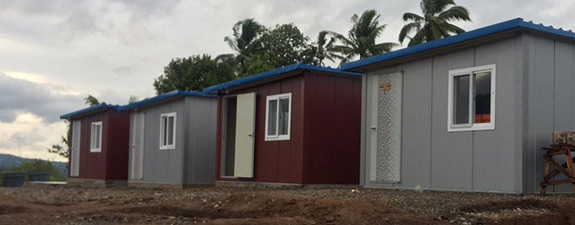
After almost two decades since the first LSP Guideline was released and with the many new challenges to be faced that greatly affects shelter delivery such as climate change and rapid urbanization, HUDCC, in partnership with the UN HABITAT, embarked on the review and enhancement of the shelter planning guidelines in order to ensure that the LGUs can keep abreast with the call and challenges of the present time as well as prepare for the eventualities that the global climate change phenomenon is expected to bring. This joint endeavor is part of the project known as the Achieving Sustainable Urban Development (ASUD) which is being implemented by the UN HABITAT in five countries, one of which is the Philippines. Based on the review, the Updated LSP Manual was crafted.
RIGHTS-BASED. International human rights law recognizes everyone’s right to an adequate standard of living, including adequate housing.
LOCALIZED DECISION-MAKING. The principle of localized decision-making seeks to ensure plan ownership, accountability and efficiency in the implementation of the plan. This approach in planning has both social and economic benefits. It can draw on local knowledge, expertise, insights and solutions to address locally identified priorities. A plan can be designed, initiated and implemented in a shorter time frame if there is significant local participation. Its benefits can be reaped sooner and this represents in itself a saving both in time and in other resources.
CAPACITY-BUILDING. This is best manifested through the technical assistance extended to the local government units in crafting of a Local Shelter Plan that specifically spells-out all the policies, programs and projects that the LGU can do to achieve sustainable interventions to their communities and affected families.
PLAN IN ADVANCE WITH SUFFICIENT SCALE AND DENSITY. Contrary to piece-meal planning, medium to long-term planning provides a more holistic and integrated approach to shelter provision. To prevent or minimize urban sprawl and promote economies of scale, it is necessary to achieve good density in shelter planning (at least 250 people per hectare).
SUFFICIENT STREET NETWORK AND PUBLIC SPACE. Developing an adequate level of street network and public space ensures neighborhood sustainability and better mobility. A functioning street network is also vital for the businesses to thrive and expand, hence, supporting economic activities or livelihoods in the area.
INCLUSIVE PARTICIPATION. The ultimate aim of participation is empowerment, capacity building and good social-mix.
SUSTAINABILITY. Aim to achieve social, environmental and economic sustainability. Households are not only major consumers of natural resources, energy and water but also major generators of waste. There is a need to generate strategies towards the building of sustainable cities or towns, such as resilience to hazards, proper waste management, and the integration of poverty reduction activities or livelihood programmes to the shelter plan.
AFFORDABLE AND DECENT HOUSING. Majority of urban households are either informal settlers that live on shacks on un-serviced land or renters in slum areas without lease agreements. The regular housing finance mechanisms do not usually allow for incremental, or self-help housing solutions which, oftentimes, are the only affordable options to the poor. Financing rental housing is also not among the priorities of the housing financial institutions as it does not provide any collateral. However, based on the principle of affordable and decent housing, tenement rental housing is advocated as an option for the lower income groups. Tenement rental housing also promotes maximum use of the limited land resources through densification.
PARTNERSHIPS. There is a need to facilitate partnerships between the local government, civil society organizations, the people’s organization, and other private sectors such as the service providers. Hence, the LSP should promote partnerships and complementation of resources (manpower, finance, capabilities).
PROVISION OF BASIC INFRASTRUCTURE. Provision of basic infrastructure, such as water, power, roads, drainage and sanitation, are key components of shelter. This is what makes shelter decent and humane. This is what molds the self-esteem of people; this is what promotes healthy and productive communities.
